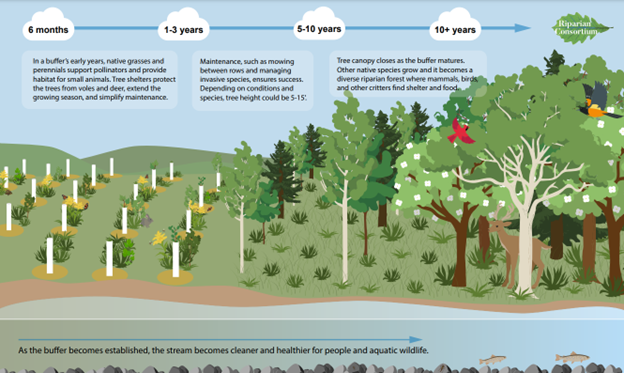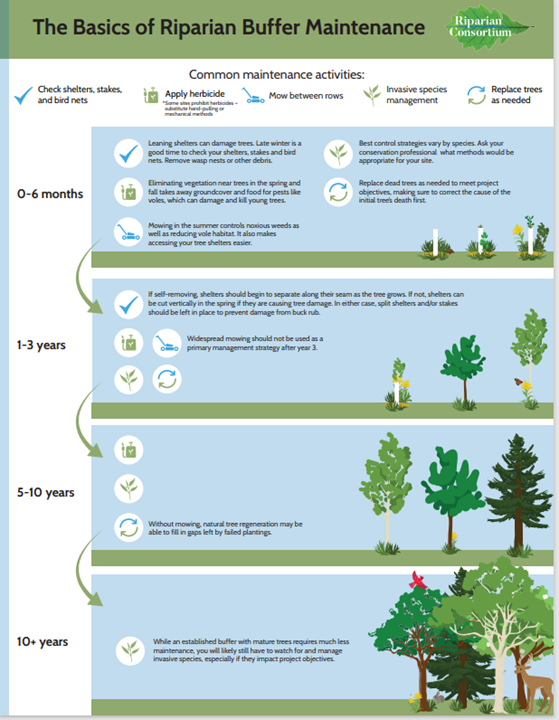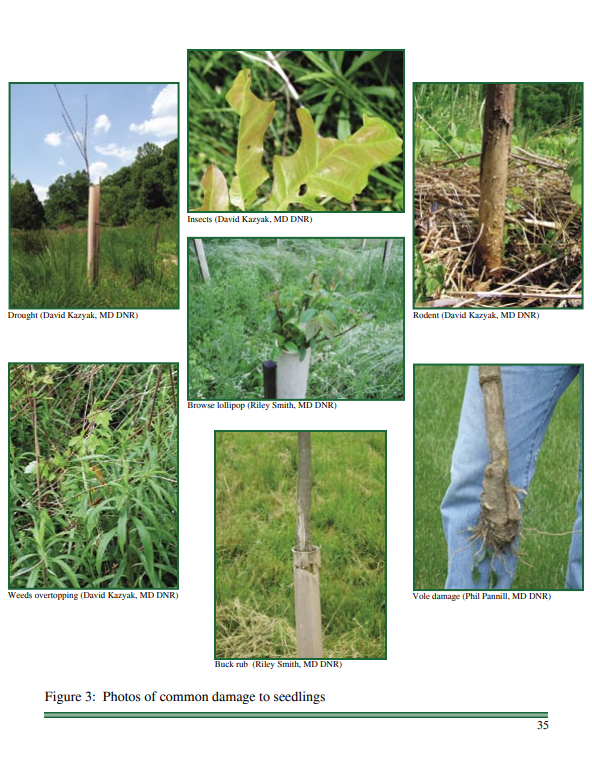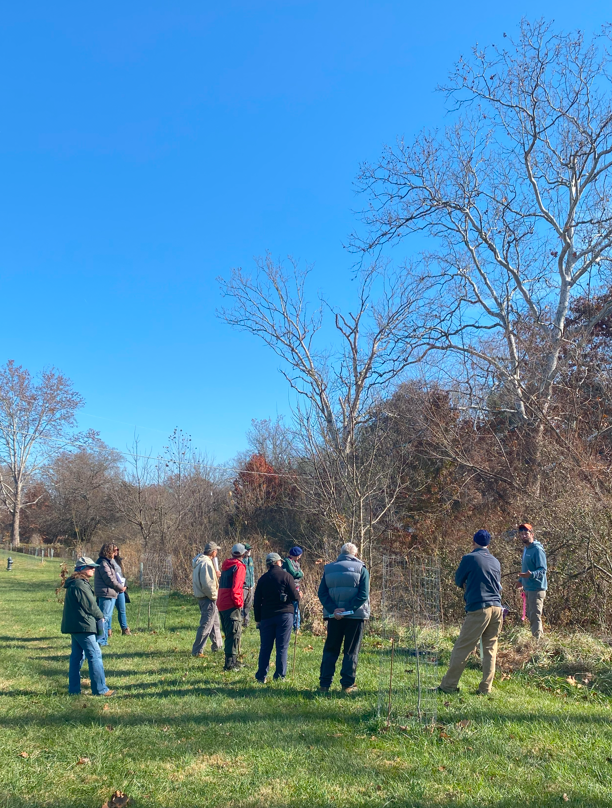The idea of a riparian forested buffer being established on your property probably sounds exciting and daunting all at the same time. On one hand, you get added vegetation and will need to mow your lawn less, but on the other hand you’re saying to yourself, “okay, what does the maintenance look like on this thing?!” It’s totally understandable to be a bit overwhelmed about where to begin once a touch of reality replaces your excitement. However, if you are involved with the James River Buffer Program (JRBP) through the James River Association (JRA) and the Chesapeake Bay Foundation (CBF), the initial three years of maintenance as well as initial site preparation prior to planting are covered free of cost. What does that mean? You do not have to do anything (unless you have an exceptional green thumb or want to be involved in the process from start to finish) for the first three years of the buffer’s life, until it “exits” that free maintenance period!
Initial site preparation before planting
For the JRBP, the maintenance process to start the buffer is straightforward. CBF staff will come out with our contractor and identify the buffer areas, look to see what invasive species need to be treated, and assess what equipment will be needed to get the space ready for the buffer to be planted. Once that is done, the contractors will contact you to set a date that works to prepare the buffer sites – mowing, invasive removal, etc. Plantings occur either in the Spring or Fall.
“In November, CBF and our partners at the James River Association (JRA) hosted a buffer maintenance workshop. Attendees included landowners who have worked with CBF and JRA to install riparian forested buffers on their properties as part of the James River Buffer Program. The James River Buffer Program’s innovative method of working with landowners on buffer installation has led to hundreds of acres of trees being planted in the Middle and Upper James River watersheds. CBF and JRA work with landowners to design, install, and maintain buffers with no out-of-pocket costs or hassle of overseeing the project by the landowner. This turnkey approach has been very successful. Riparian forested buffers are one of the most cost-effective ways that we can reduce pollution going to our local rivers, like the James, and the Bay. The streamside trees help filter runoff before it reaches the river, while providing habitat for wildlife and cooling stream temperatures for fish and other critters. CBF is very thankful for our funders at the Virginia Environmental Endowment for providing the money to implement this project. To learn more about the program, visit jamesriverbuffers.org.” (CBF Headwaters Newsletter – https://www.cbf.org/document-library/cbf-publications-brochures-articles/headwaters.pdf)
Three-year maintenance within the JRBP
Once the trees are planted, CBF staff will go out at least once a year to check survivability and to perform tree tube maintenance, which includes checking the tubes for invasives, weeds, or grasses that might be outcompeting the trees growth. Tree tubes are important to the initial survivability of the young tree saplings as they provide protection from weather and animals, act as a greenhouse for the trees to get sunlight and heat required to grow and helps provide a straight area for them to grow amongst the other vegetation. However, tree tube maintenance is still a critical part so we can see if the trees are growing as they should, if they have other vegetation outcompeting them, and if there was any damage done to the tubes themselves. Each site looks different for maintenance depending on when the trees were planted and how long they have been established. The tree tube maintenance requires the staff member to walk the buffer and check each tube and assess what needs to be fixed. The contractors will also go out throughout the year to mow in between the rows, assess the invasives, and spray herbicides around the tree tubes if necessary. This all happens throughout the first three years that your buffer is in the program. Once the buffer “exits” this period, maintenance is transferred over to the landowner. So, if you had a buffer planted in 2022, your buffer will “exit” that free three-year maintenance period provided by staff in 2025. At this point, you can continue to mow in between the rows – this could be done less frequently depending on how accessible you want the buffer. It might be easier to keep the grass around it fairly short for those first few years so you can assess the tree tubes, which will begin to break open as the tree trunks are getting larger. At that point, the tree tubes can come off and be recycled.
Why is maintenance important?
The James River Buffer Program has a great track record with the survival rate of buffers and a large part of that success comes from the hard work all staff put into checking these buffers and the maintenance by both contractors and staff. The first three years of a tree’s life gives buffers the best chance at survival, which means, 1) checking the tubes for outcompeting vegetation, 2) removing bird nets at the appropriate time so the trees do not get stuck and grow around the tree net, 3) making sure the tree tubes are secured after heavy storms or wind so the trees are not damaged, and 4) keeping track of the survival at each site so we can assess if trees will need to be replanted at some point. With the help of an ever-growing community – landowners, contractors, CBF staff, JRA Staff, partner organizations and agencies – the James River Buffer Program continues to succeed and expand and protect our vital waterways. Thank you all for your support and dedication to the environment!




